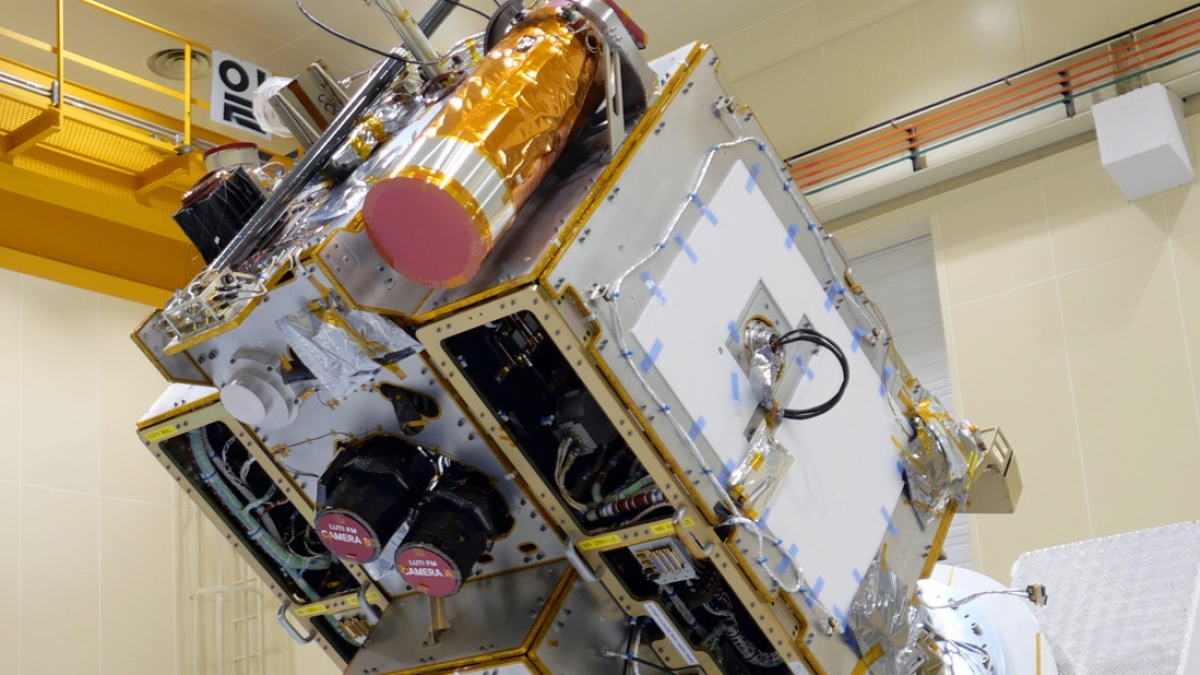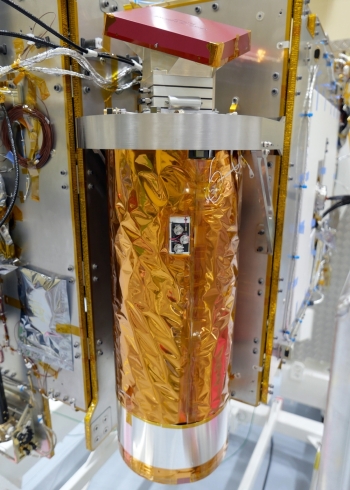Tightening the 'collar' around the moon’s darkest mysteries

NASA's Shadowcam instrument. Photo courtesy KARI (Korea Aerospace Research Institute)
Unlike the Earth, the moon tilts only slightly on its axis — about one-and-a-half degrees, compared with the Earth’s 23-degree tilt.
Because of this, there are certain places on the moon that never see the light of the sun. Lunar scientists call these the moon’s permanently shadowed regions, or PSRs.
Now, scientists at Arizona State University have begun probing inside those regions with the help of the NASA ShadowCam instrument. The latest bundle of images, taken by ShadowCam between April and June of last year, reveal the moon’s shadowed areas in far greater detail than Earth-based telescopes or earlier orbiting spacecraft have ever done before.
Video by Steve Filmer
The secret behind ShadowCam’s success
Many of the moon’s darkest places are at its poles, where it’s thought there may be water ice and other useful substances that could support astronauts, landers and rovers.
In order to make those places more visible, ShadowCam amplifies the small amounts of light reflected off the edges of crater rims as it orbits the moon aboard the Korea Pathfinder Lunar Orbiter. With the dark areas illuminated, ShadowCam takes a series of images, drawing ever tighter circles — called “collars” — with each orbital pass. When stitched together, the images create a visual map of the area.
Nick Estes, the science operations manager for ShadowCam, says the “collars” approach means the research team can exceed the original mission goals because they are able to image PSRs of all sizes within the collar areas, rather than focusing only on the larger ones.
“Humans are very visual,” Estes says. “We like to see the surface, see what these features look like, to be able to make interpretations of what's there. That's what ShadowCam's going to let us do.”
Shadows within shadows
Like most of the rest of the moon’s surface, many of the PSRs are dotted with impact craters, within which there are sometimes more craters. That makes getting an image especially challenging. But it also adds to the excitement of looking at places on the moon that have never been seen before.
“We haven't seen any obvious signs of large chunks of ice or anything like that, but it doesn't mean it's not there,” Estes says.
Explore the latest ShadowCam images at data.ser.asu.edu.
More Science and technology

Study reveals genetic insight into desert survival
The deserts of the American Southwest are home to the Mojave and Sonoran desert tortoises, two seemingly similar yet genetically distinct species of turtles. These tortoises, adapted to different…

Study reveals lasting effects of common weed killer on brain health
Environmental exposure to toxins in the air, water or certain chemicals can increase the risk of ill health effects, including to the human brain.The human brain is an incredibly adaptable organ,…

ASU grad to use science to get an edge on crime
Editor’s note: This story is part of a series of profiles of notable fall 2024 graduates.As a child growing up in Pinetop, Arizona, Giavanna Caruth's family experienced a tragic loss in the early…
